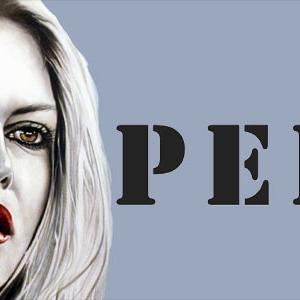What is reality? The reality of everything to do with us. We can never get out of our own way of perceiving the totality of the different worlds in which we live. And there are many: there is the superficial truth, and there is the profound truth; there's the macroscopic world that we see, there is the microscopic world, mobile do not see, there is the world of ourselves, there is the world of our atoms, the world of our nuclei etc. etc .. But are all complementary and are all complements of perceptual construction that our mind makes us as reality. It 'amazing to discover, docet neurology, that even the simplest type of precezione is distorted by our mind. And 'if personal attention is the way in which our mind comes into contact with things in the environment, we realize the great democracy that our existence gives us in knowing the world. Exactly this is the freedom that captures Cinzia Pellin and imposes a technical mastery that allows the execution, is an approach to what we believe to be the aspect of the world, then "strain it" with a distorting lens. This is because the artist is not interested in investigation and scrupulous verismo of the physical data, a mimesis of reality, but the introduction of an unnatural disruption of the "usual way" of seeing things. We feel, therefore, the strong critical note, which infuse the works of Pellin: today the most usual way of knowing things is, in fact, through the distorting screen of a transmitter. The reality recovery and re-transmitted is real? The answer is clear law in pelliniani portraits. instant shots and casual, intimate first floors, fragmentary image progressively reduce the gap between painting and photography. But the artist follows his own path and even goes beyond this similarity. Here they stand out red lips, almost zoomorphic, and glassy eyes from Roman statues of pagan goddesses (dive lat.) That challenge the two-dimensional space of the canvas with bold looks and decided. The executive craftsmanship gives this formal perfection as to make them unreal, divine. We understand, then, that not so much realism or hyper-realism is, how much of a thorough search on our figurative perceptual attention. The large selection that continuously carry out and unconsciously know in this world and give him a physical body is what actually affects Pellin.
The artist renounces almost completely to color, making the most of the representation in black and white, accentuating only two or three points with a contrasting color charge. Well, this is exactly the process that occurs in our minds when we look at a scene or an object and our attention selects the highlights that will be the reference for later recognition of the already seen.
Pellin almost always leaves the symmetry in setting representative, capturing fleeting moments, scraps of bodies or actions. Likewise our brain refuses equivalents, as not stressing, and focuses on the imbalances and the fragments, stimulated to recompose their integrity.
Creative avoids the softness of matter, favored in contemporary art, working with the precise and delicate section of the designer who makes clear narrative at all times. So our neurons "translate" before the simple and sharp edges, as the basic information in the reading of complex shapes.
A survey, therefore, unknowingly scientific, where Cinzia Pellin announces, without being conscious, a physiological truth as much philosophical:
"The mind does not need, like a vase to be filled, but rather, like wood, a
the spark that turns on you and give you the impetus of research and an ardent love for the truth "
Plutarch
Critical Presentation by:
Prof. Giovanni Faccenda
Curator of the exhibition:
Deborah Petroni
Exhibition catalog:
AEM SRLs
Sponsored and promoted by:
www.ilpensieroartistico.eu
www.paolobalsamo.it
Show Length:
from November 12 to November 24, 2016
Tuesday to Saturday from 11.00 to 19.00 with a lunch break
Monday and Sunday closed
Free entry
Info and contacts:
Mail: info@wikiarte.com
Site: www.wikiarte.com









Comments 0
Say something